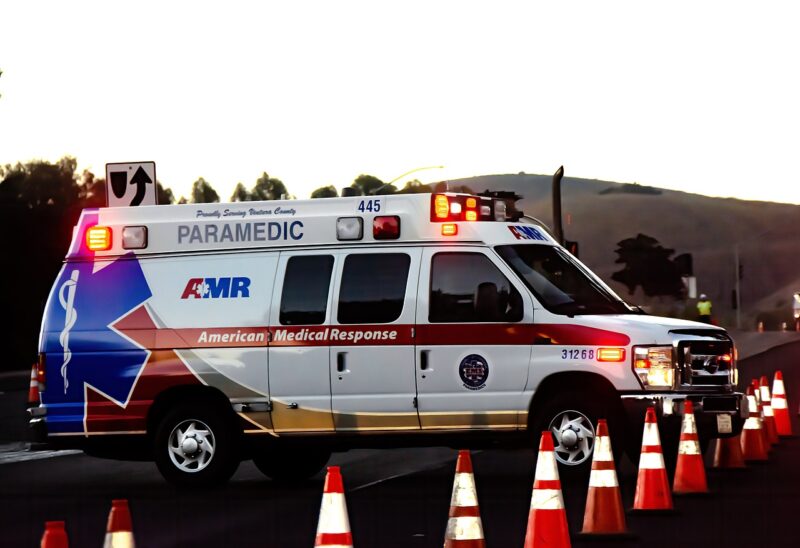The Role of Ambulances in Managing Public Health Crises and Epidemics
November 13, 2024

Ambulances play a crucial role in the healthcare system, especially during public health crises and epidemics. As the frontline responders, they provide immediate medical assistance and facilitate effective patient transportation to hospitals. This article explores the multifaceted role of ambulances in managing public health emergencies and the critical importance of their timely and efficient service.
1. The Importance of Ambulances in Public Health Crises
In any public health crisis, the speed and efficiency of medical response are paramount. Ambulances serve as the vital link between patients and healthcare facilities. Here are several reasons they are indispensable during such events:
- Emergency Response: During health crises, the need for immediate medical attention skyrockets. Ambulances are equipped to respond within minutes, reducing the time it takes for patients to receive life-saving care.
- Mobility in Emergencies: In pandemics, hospitals can become overwhelmed. Ambulances increase healthcare accessibility, providing transport to various treatment centers, including field hospitals and temporary care facilities.
- Pre-hospital Care: Paramedics deliver critical care on-site. This initial treatment can stabilize patients during transport, improving outcomes in emergencies.
During a pandemic, such as the COVID-19 outbreak, these services have been tested significantly. Ambulances not only transport patients with severe symptoms but also facilitate social distancing protocols by transferring patients directly to designated facilities.
2. The Role of Ambulances in Epidemic Response
Epidemics often create unique challenges. The increasing number of patients, combined with the need for effective triage and isolation, demands a robust ambulance service. Some of the essential roles ambulances play during epidemics include:
- Rapid Triage: Ambulances can assess patients’ conditions quickly, deciding on the urgency of care needed. This rapid triage helps prioritize patients based on medical needs, alleviating pressure on hospitals.
- Capacity Management: During health crises, the capacity of healthcare facilities can be stretched. Ambulances help manage these challenges by facilitating transport to alternate care facilities, ensuring efficient use of resources.
- Coordination with Health Authorities: Emergency medical services often collaborate with local health departments and government agencies to effectively manage the distribution of medical aid and track disease patterns in communities.
The use of specialized ambulances, equipped with advanced technologies, has also proven effective. For example, mobile units featuring telemedicine allow healthcare professionals to consult remotely, enhancing the decision-making process in real-time.
3. Challenges Faced by Ambulance Services During Public Health Crises
While the role of ambulances is pivotal, they face numerous challenges during epidemics and public health crises:
- Increased Demand for Services: An influx of patients can overwhelm ambulance services, affecting response times and overall effectiveness. During the COVID-19 pandemic, routes and response systems had to be rapidly adapted to accommodate exponential growth in call volume.
- Resource Allocation: Limited resources, including personnel and vehicles, pose a significant challenge. High absenteeism rates among medical staff due to illness or quarantine can strain operations further.
- Safety Concerns: Health professionals face increased risks during epidemics, exposing them to infectious diseases. Robust protocols and personal protective equipment (PPE) are essential for their safety during patient interactions.
To address these challenges, many cities have initiated training programs, improved communication systems, and adopted contingency plans to enhance service resilience.
4. Innovations in Ambulance Services Amidst Epidemics
The urgency of public health crises often catalyzes innovations within ambulance services. Some notable advancements include:
- Telemedicine Integration: Remote consultations enable paramedics to assess and advise on patient health in real-time, which is particularly beneficial during high-demand periods.
- Enhanced Communication Tools: Modern dispatch systems provide better tracking and resource allocation, ensuring ambulances are directed to those in most need rapidly.
- Mobile Testing Units: Many ambulance services have incorporated mobile testing facilities, allowing for on-site testing of infectious diseases, which minimizes cross-contamination risks.
Such innovations help to streamline operations and improve patient care during critical times.
5. The Future of Ambulance Services in Public Health Management
In light of the experiences gained during previous crises, the future landscape of ambulance services is expected to evolve significantly. Potential trends include:
- Increased Collaboration: Stronger partnerships between emergency services, public health officials, and community organizations will facilitate faster responses and improved resource utilization.
- Technology Integration: The use of advanced technologies, such as drones for delivery of medical supplies, automated dispatch systems, and data analysis tools, can enhance efficiency and responsiveness in emergencies.
- Community Engagement: Public awareness campaigns will foster greater community collaboration, ensuring that individuals understand when to use ambulance services appropriately and how they can aid during crises.
By preparing for the challenges of tomorrow, ambulance services can improve community health outcomes and foster greater resilience during public health emergencies.
Conclusion
Ambulances are integral to managing public health crises and epidemics, facilitating rapid medical response and ensuring timely patient care. While challenges persist, innovations and improvements in service delivery enhance efficacy in critical situations. As public health challenges continue to evolve, ambulance services must adapt, integrating advanced technologies and fostering collaboration to meet the pressing needs of communities.
The importance of understanding the role of ambulances speaks to their value in safeguarding public health and ensuring preparedness in times of emergency.








